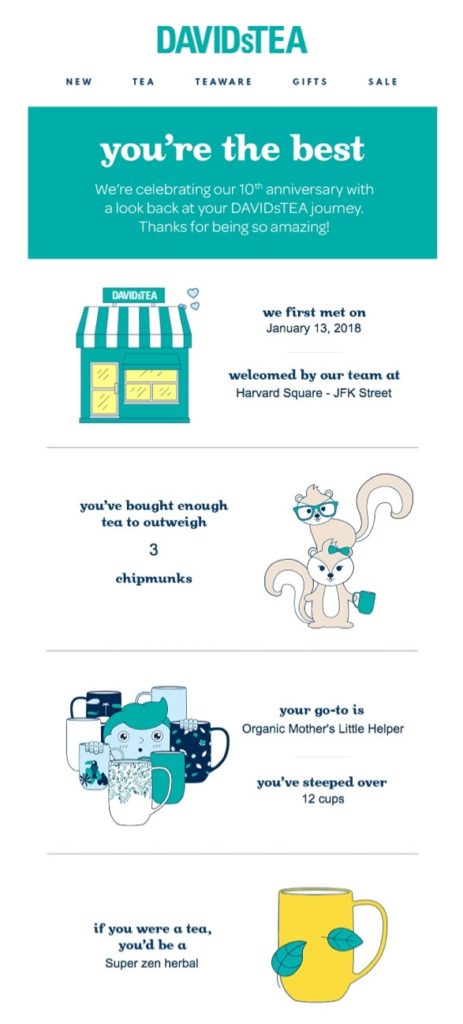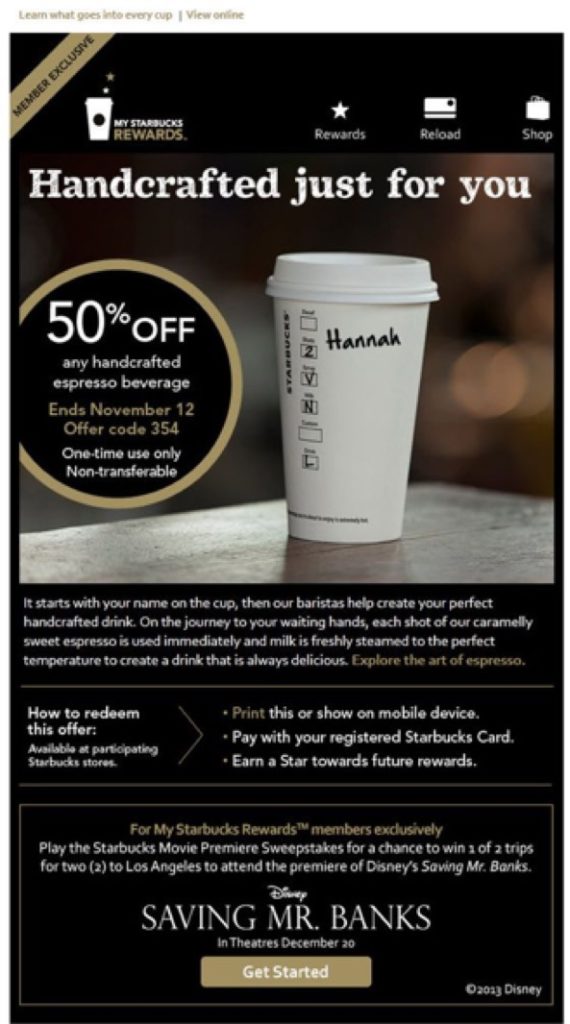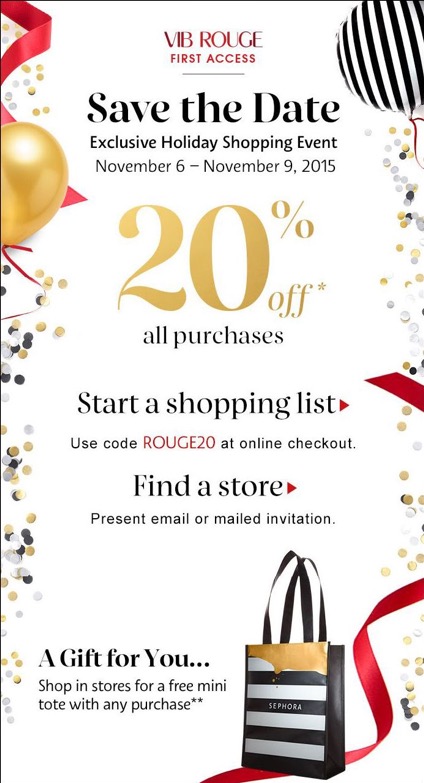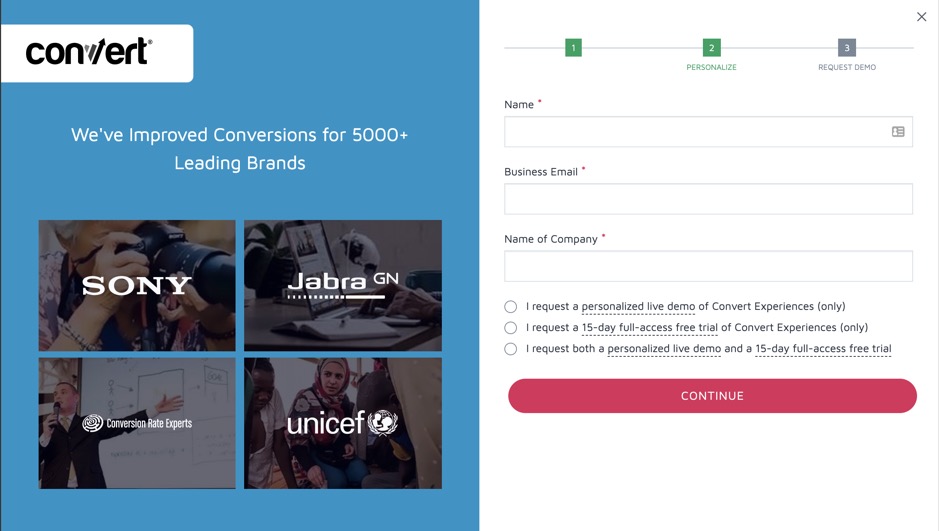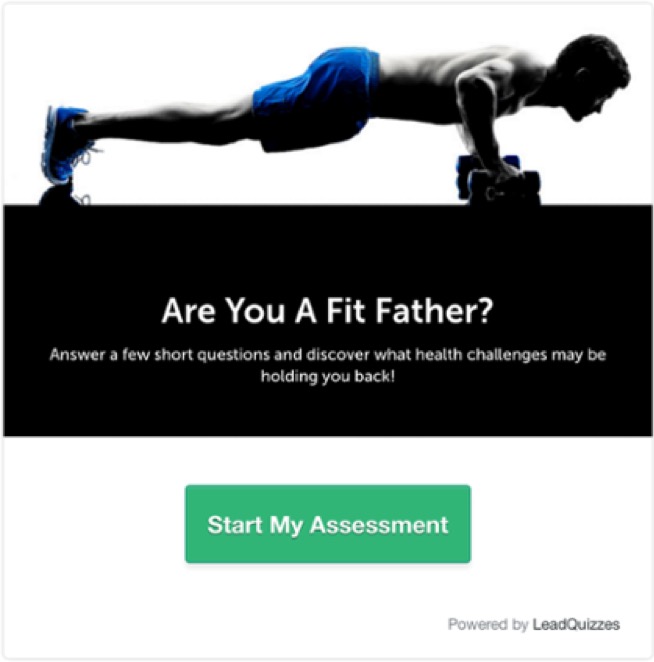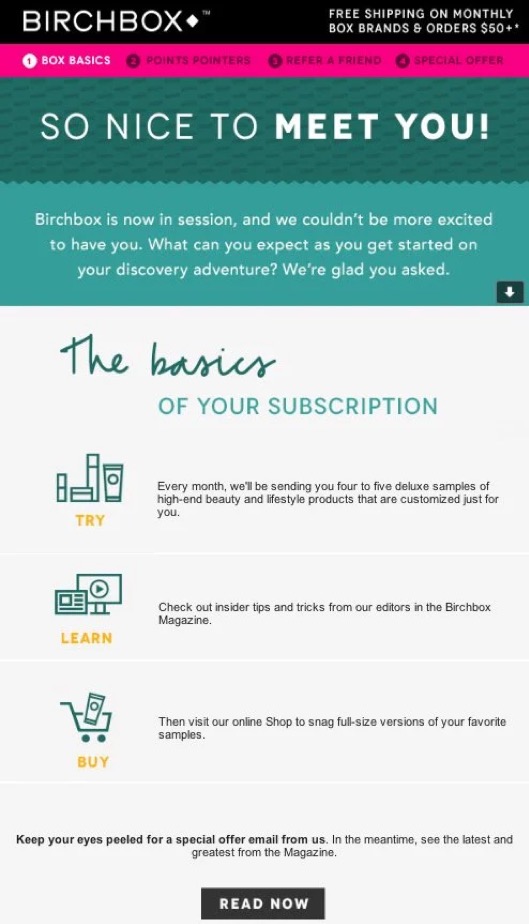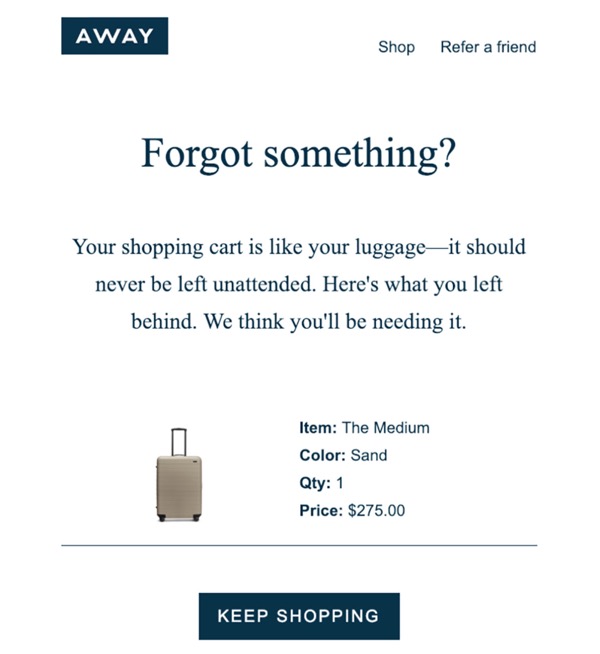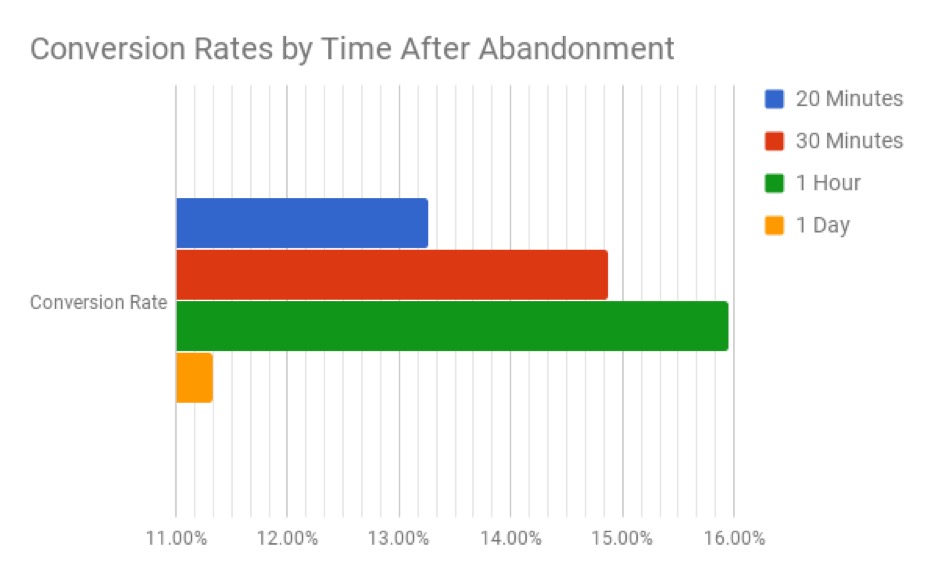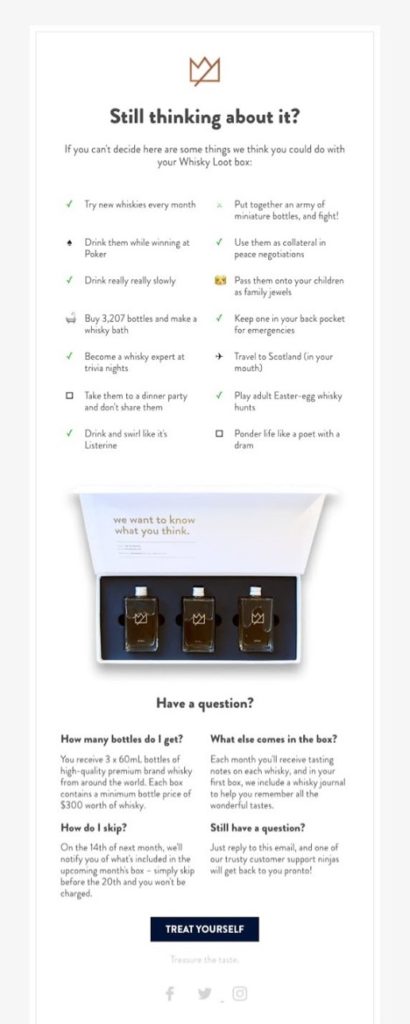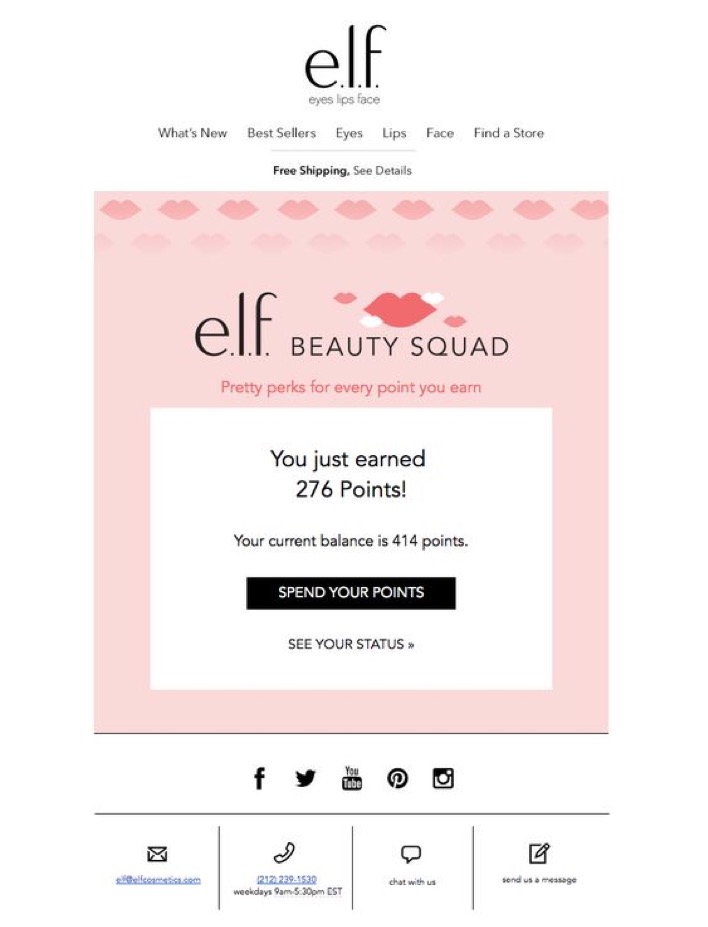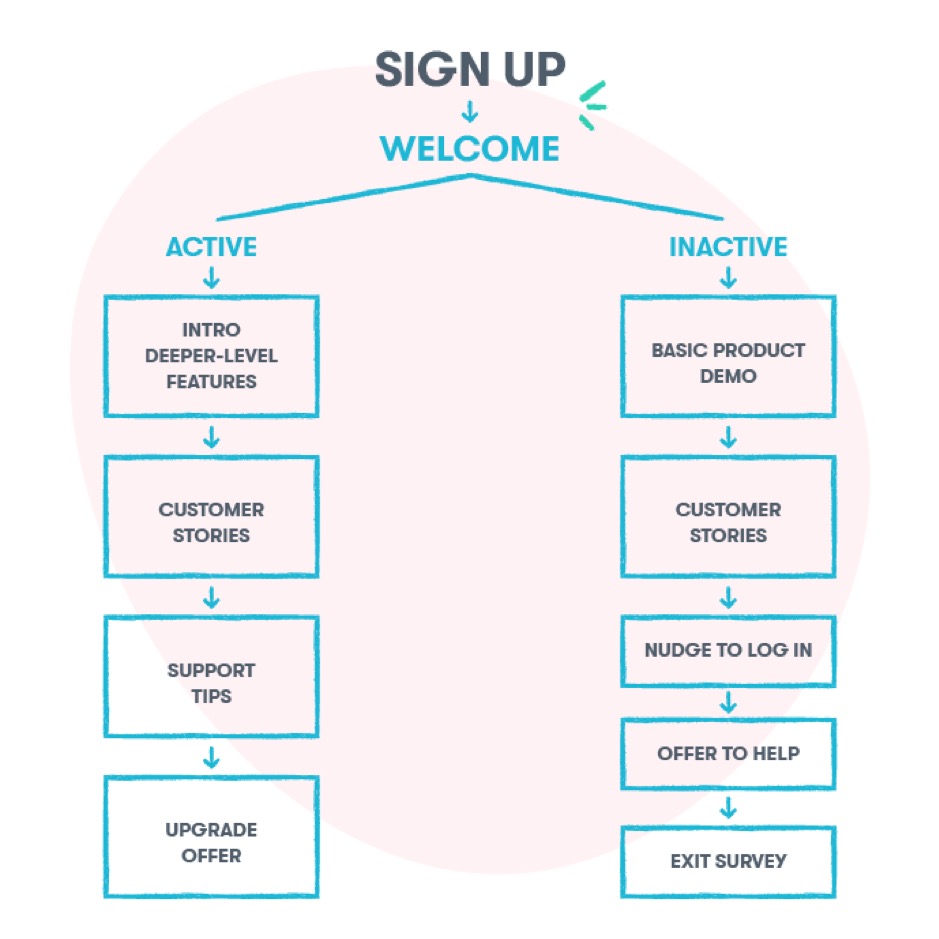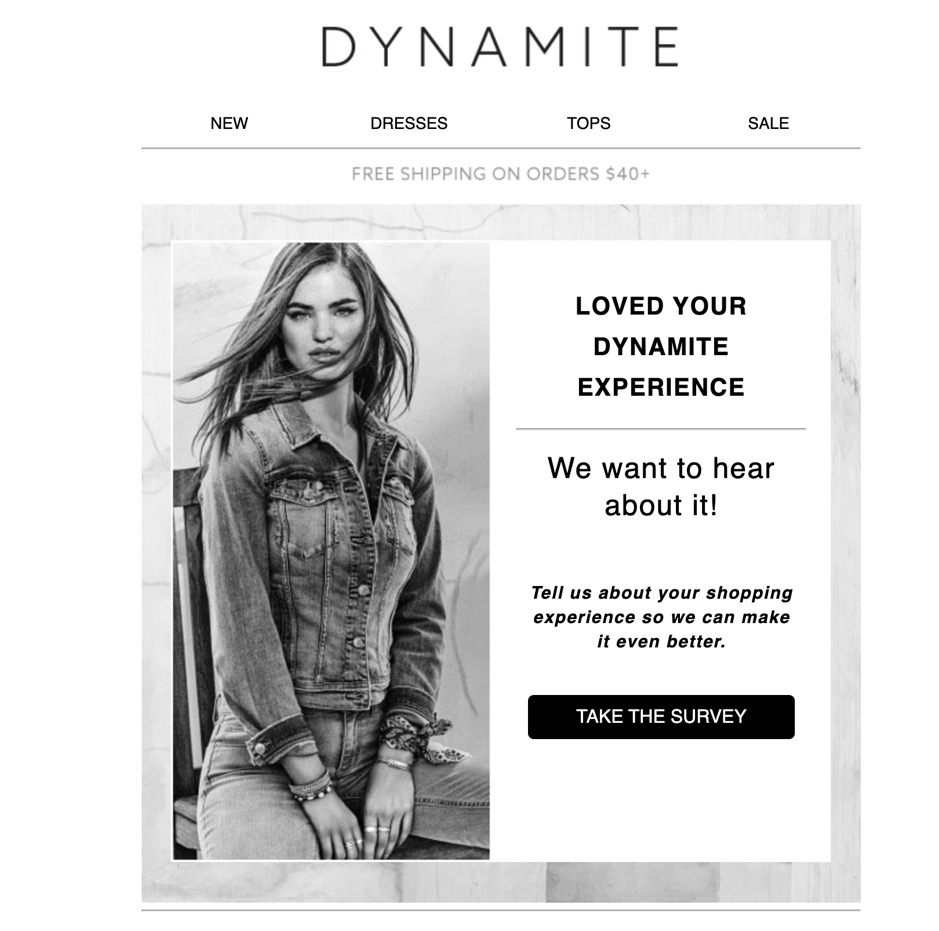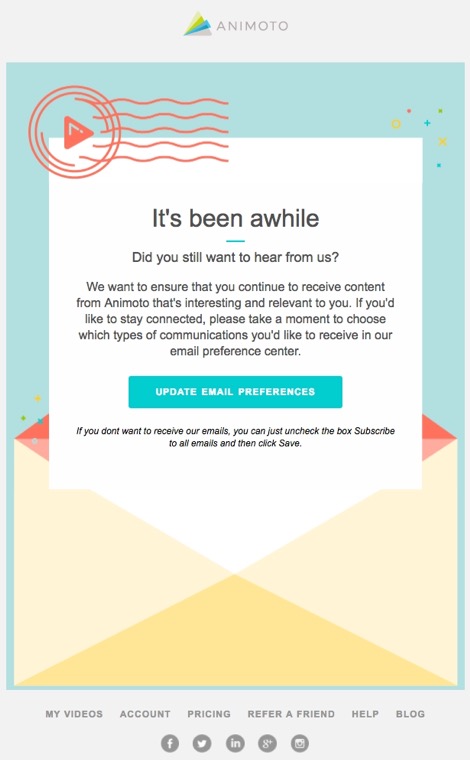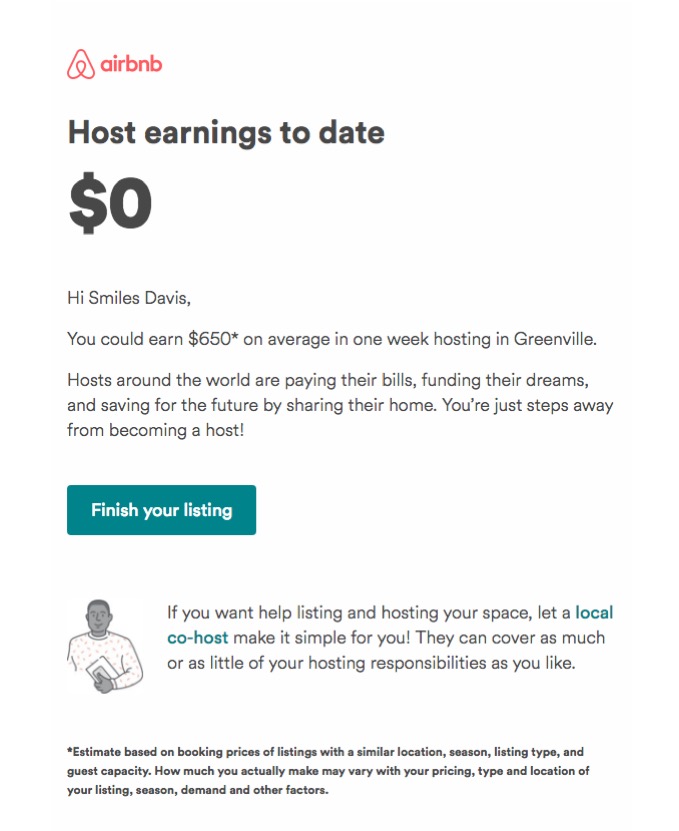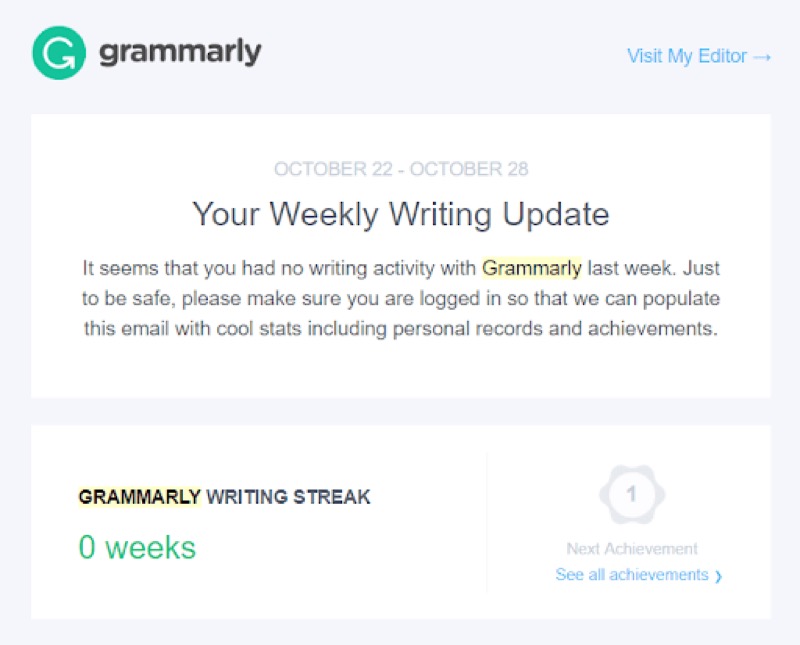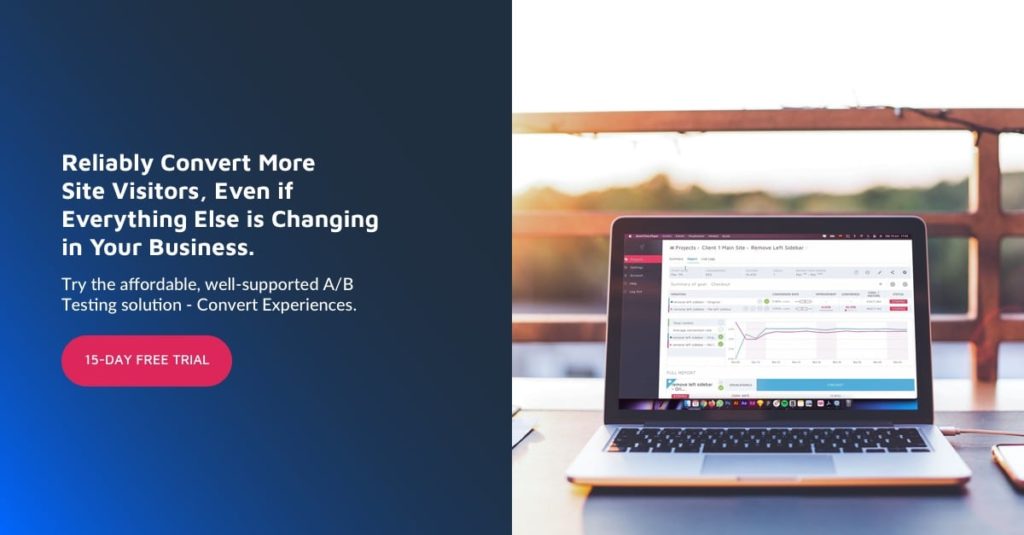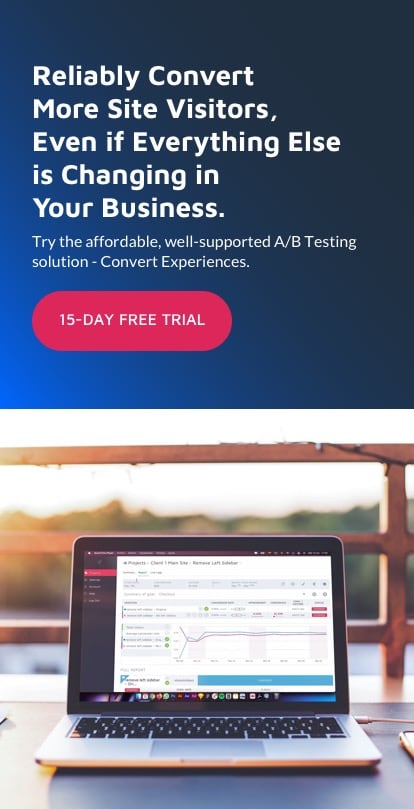An Email Automation Guide for Marketers Who Take Personalization Seriously
The best email a customer can receive is one that is personalized. Think about what makes you open an email from a business: is it because the email addresses you by your name? Does it recommend a product or a service that you’ve shown interest in before?
The answer is most likely – yes.
However, a personalized email goes beyond addressing a customer by their name. A powerful email involves using customer data to ensure the right messages are sent to the right customers at the right time.
In this article, we will demonstrate how businesses can collect important customer data to create persuasive email campaigns that are extremely personalized. We will show you how to segment the data you collect, and a few examples of the types of campaigns you should be creating for a personalized customer journey.
Get ready to boost your email open rates and click-through-rates!
What is Email Personalization?
Email personalization is when a business uses customer data to target an email campaign that is unique to every subscriber. Personalizing an email can be as simple as using a customer’s first name, or it can be as complex as altering the email content to match the information you have about a customer.
When you know a customer’s demographic information (such as their location and gender), purchase history, and preferences, you can ensure your emails are written specifically with those data points in mind.
When a marketing email is personalized and targeted, businesses see above-average open rates and click-through-rates. In fact, personalized email marketing generates a median ROI of 122%, and 71% of consumers say a personalized experience influences their decision to open and read emails from businesses.
This is why marketers need to consider three things when planning an email campaign:
- Understand who the customer is on the receiving end, and ensure they’re properly segmented into customer profiles.
- Carefully craft the copy to match every customer’s preferences and needs.
- Ensure the emails are delivered at a time when customers are more likely to engage with them.
A personalized email campaign is powerful for fostering lifelong relationships. Next, we’ll show how you can customize your emails to be personalized, and what sections you should be focusing on.
What Parts of Your Email Can Be Personalized?
No matter if you’re sending a weekly newsletter or onboarding a new customer, it’s important to ensure the email is relevant to every individual. Here are a few ways you can personalize an email.
1. Subject Lines
Although it’s short, the email subject line is the first thing your customers read. Considering emails with personalized subject lines generate 50% higher open rates, it’s important to include the customer’s name or write a copy that’s relevant to them. For example, check out this email from Netflix that tells the user about a new movie they’d enjoy. This is sent based on movies the user has watched before.

2. Email Copy
The body content in an email is another opportunity for personalization. On a high-level, you’ll want to introduce the customer by their name or business. On a deeper personalization level, you’ll want to use customer data to make sure to include any relevant products, share the right sizes for clothing, share colors of products that you know matches the customer’s preference and anything else that tells the customer that the email was designed specifically for them. Check out this anniversary email example from David’s Tea.
3. Imagery and Videos
Imagery in emails is just as important as text. Luckily, you can also alter images and videos in your campaigns to better suit the end-user. For example, if you’ve released a new clothing line for the season and you know you have customers that prefer black turtleneck sweaters, you can use images of models wearing a black turtleneck sweater in the announcement email to that group.
Here’s a great example of a Starbucks email that included the customer’s name on the cup in the main image.
4. Call to Action and Landing Pages
The call to action is meant to prompt the customer to be directed to a desired page. Depending on where a customer is at in their journey, you should personalize the email CTA for that stage. This means altering the text and landing page for each email segment.
For example, if you have a promotion going on for loyalty members where every tier gets a unique discount (lowest tiered loyalty members get 10% and highest tiered members get 20%), you’ll want your email CTA to be unique to that customer and their loyalty program tier. Sephora’s email of their holiday campaign for VIB Rouge members has a customized CTA for those members.
These are just a few ways you can personalize specific sections in an email. However, in order to personalize your emails this way, you’ll need to start collecting customer data. With data, you can segment customers, and then you can build personalized email automation. We’ll share how to collect customer profile data next.
How to Gather Important Data About Your Customers (Ethically)
The first thing you should do is identify your audience.
As great as buyer personas can be for understanding your target customer base, they aren’t always based on real data.
How can you gather this information? A few ways include sign-up forms, purchase history, quizzes and chatbots are all valuable tools for data collection.
Sign-up Forms
Whether customers are asking for a demo request or downloading an interesting piece of content, your business has an opportunity to ask a few detailed questions through a sign-up form.
For example, if you’re trying to qualify your leads, you can ask questions about the industry they’re in, what stage of revenue generation they are at, the size of the company, and more, before they’re able to request the demo or download your content.
Purchase History
For customers that have purchased your products or services before, look into their purchase history to see if there are any trends, patterns, or identifying information that you can use to understand them better.
Chatbots
Engage with customers using a chatbot with AI responses. Encourage back-and-forth conversations where you can ask customers questions, share value-added content, and offer customer support to find pain points with your products or services.
Best chatbots are used to collect email opt-ins as well by asking customers directly if they’re interested in email communications from your business.
Quizzes
Quizzes are one of the best tools to collect important customer data and email addresses at the same time.
By asking personalized quiz questions, you can learn a lot about who your customers are and why they’re engaging with your business. Businesses can also ask customers to opt-in to email communications to receive their quiz answers. This is a great way to grow your marketing list while collecting data.
Once you have the tools to collect detailed customer data, the next step is to use your data to properly segment customers into lists. Next, we’ll talk about how to segment.
Create Segments Based on Your Data
Now that you’ve learned how to collect the right data about your customers, the next step is to organize your customers into lists based on that data. We’re going to show you four different types of segmenting below. This will help you organize your customers and plan campaigns that are personalized to each segment.
1. Behavioral Targeting
Behavioral targeting is when customers are segmented based on their preferences, needs, likes, dislikes, and other behavioral data.
For example, if you know a segment of customers have acne-prone skin, you can send emails to that segment using messaging related to their problem and share high-quality content to help them understand more about your products.
2. Demographic Targeting
Demographic targeting includes segmenting a group of customers based on age, gender, location, or the source from which they discovered your brand.
For example, if you sell razors for women, you’ll segment a group of female customers within an accurate age range into a list you know would be interested in using your razor.
3. Purchase History Targeting
Purchase history targeting is when customers are segmented into groups based on previous purchases they’ve made. This directly ties in with purchase history data and the trends you see with these customers.
For example, any customers that have previously purchased dog treats, dog toys, or anything else for dogs could be segmented into a group you can classify as “dog owners.”
4. Self-segmentation
The last segment is based on self-segmentation.
For self-segmentation, businesses direct customers to an email preference center where customers are asked questions about what type of content they’d like to receive. You can then use these answers to ensure you’re only sending what they want to receive.
Once these segments and lists are created, you can start building campaigns and flows that have personalized messaging suitable for each segment. Remember, your goal is to move customers along the sales funnel, so think about what types of email campaigns you can send to achieve that.
In the next section, we’ll talk about what personalized revenue-driving email flows you should be creating based on your customer data and segments. This will help you create awesome campaigns that engage every customer — just like in this welcome email from BirchBox that explains what a customer is going to receive from their new subscription, promises special offers, and shares a link to relevant content from its magazine.
5 Examples of the Types of Personalized Campaigns You Can Create
Your email flows and campaigns must be based on real data you have about customers — that’s what ensures they are personalized. We spent time talking about how to properly collect data and segment your buyers, now here’s how you can use that data.
Creating an automated email blast that is sent to customers based on triggered actions is a great start. For example, if a customer spent time browsing through your line of moisturizers, you could follow up with them in a day to recommend a moisturizer they may be interested in. Showing customers you’re listening to their needs builds lifelong relationships where customers will continue to come back to make repeat purchases.
Here are a few examples of personalized triggered email campaigns you could be creating:
1. Abandoned Cart Flow
Did you know the average cart abandonment rate is 69.57%? Cart abandonment occurs when a customer adds products to their shopping cart and leaves your website without completing the purchase.
An abandoned cart email automation is triggered when this happens, to get that customer to recover their cart and complete the purchase. In an abandoned cart flow, the messaging is personalized to the exact products you know a customer is interested in, and it gives you an opportunity to upsell other products that are related to what was left in their cart.
According to OptinMonster, a business should send 2-4 emails for cart abandonment. The first email should be sent an hour after the cart was abandoned. This is based on data that found that customers engage with cart abandonment emails the most at the 60-minute mark.
This is because the product is still fresh in the customer’s mind at this point, which is when you’re most likely to win them back.
In the same research article, it was found that the second email should be sent one day after the cart was abandoned, and a third email should be sent three days after.
To make it more personalized, tell the customer what you think about the product and let them know that you’ve been saving it especially for them. Share what the item is and give the customer an easy way to complete the purchase. To increase the chances of winning the customer back at this point, you can offer a discount or incentive to drive the sale. With a three-part email series, a company can increase abandoned cart conversion rates by over 32%!
Check out this example from Whiskey Loot where the email shares a variety of ways the customer could use the product. Including this list makes the email feel more personalized to the customer that’s considering making the purchase.
2. Loyalty Program Updates
One way to segment your customers is based on their loyalty program status. If you offer a VIP or tier system, you can bucket users by the tier they’re in. For example, if your program has three tiers (bronze, silver, and gold), the messaging for each tier should be based on the perks, points, and incentives offered in that specific tier.
One type of personalized email campaign you can send is a bonus points campaign to your users in the top tier. Congratulate those users for being important customers, thank them for their loyalty, and offer them bonus points for a short period of time. Not only does this encourage more purchases, but it’s also a personalized campaign for an exclusive group of segmented buyers that are considered your top, VIP customers.
3. A Customer Onboarding Series
A customer onboarding series is where your targeting segments are extremely useful. Using the data you’ve collected from customers through quizzes, chatbots or forms, send new customers a welcome email drip sequence tailored to the specific information you’ve gathered.
There are many ways you can create an onboarding email series that’s personalized to every receiver. You’ll want to start with using the segments you created from before. As one example, you could segment customers into two different flows based on the size of their business. Ensure you’re using personalized language that lets the customer know you recognize what stage their business is at, so that the customer feels secure that you’ve paid attention to who they are to offer the best services for their business’ needs.
An onboarding flow has 4-5 emails; these emails should be spaced out 3-5 days apart. The goal of an onboarding series is to reduce customer churn and ensure your customers are successful with you. In order to retain every new customer, consider the type of messages you should be sharing with them to ensure they keep using your products or services, and continuously find value.
The first part of your series should be about introducing yourself to your new customers. Educate them about who you are and what your business does. Also, be honest with customers about what they can expect from your emails. Ensure you always have a clear call to action, whether it’s driving users to read a piece of content, upgrade their plan, or respond to the email directly. This example from Drift was liked so much that other businesses have copied the language.
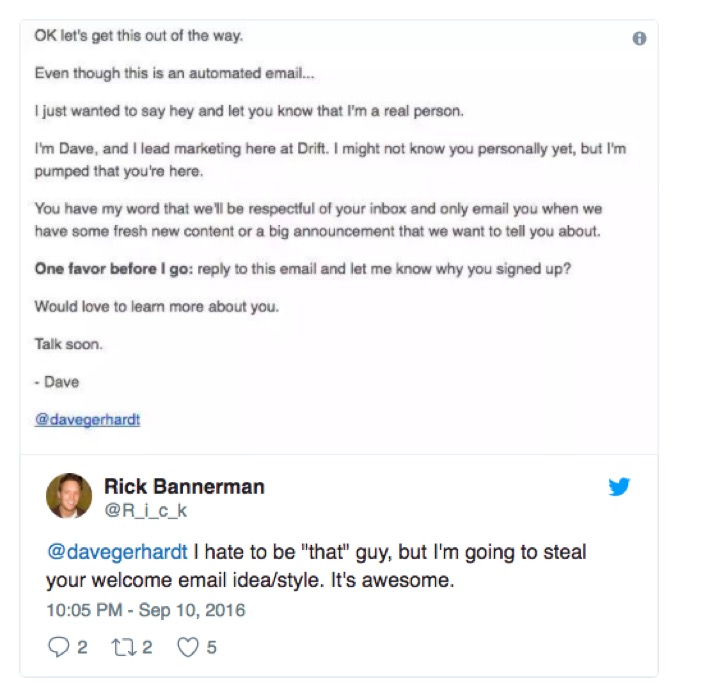
After the introduction email, it’s a good idea to choose one tip to share with users in the next 3-4 emails. This is where your segments will be important. The tips you share with customers in the follow-up emails should be suited to the issues they’re facing. If the business is a large enterprise company, the tips they read from you should be much different than the tips you share with a start-up company. Ensure every email is focused on what that business needs to read to succeed.
Although the main goal of the campaign is to retain customers, every email should have its own goal and call to action. Sharing tips and tricks in the follow-up emails will help customers learn how they can be the most successful with your product or service, which will ultimately reduce the chances of those customers churning.
4. Post-purchase Email Series
A post-purchase email series typically includes product or service feedback requests, order confirmations, and shipping updates. But, it’s also the perfect opportunity to re-engage with past customers and get them interested in your business again. Just because a customer purchases from you once doesn’t mean their journey has to be over.
In a post-purchase follow-up, thank customers for their recent purchase and ask them to take a survey about their experience. In this survey, you can ask customers if they enjoyed the experience and if they like the product. This allows you to collect opinions from customers about your business and products, and you can follow up with personalized recommendations based on a customer’s previous purchases and survey feedback.
A personalized post-purchase email campaign can help increase customer retention when you start to nurture your customers beyond the first purchase.
5. Re-engagement Flows for Every Stage of the Buyer’s Journey
Every stage of your purchasing funnel will have customers with unique experiences, so the messaging for each stage must be suited to that person.
The first funnel stage is the awareness stage, which is where a customer is only discovering your business for the first time. Someone in this stage of the funnel will require different messaging than someone in the last funnel stage (the decision stage). Using your collected data, you can personalize your email campaigns for every stage of the buyer’s journey to help you nurture each person toward reaching the final decision stage.
As one example, reach out to potential customers in your email list that haven’t engaged with you in a little while to ask if they’re still interested in hearing from you. Not only does this help you clean out your email list by unsubscribing customers who won’t engage (this isn’t a bad thing), but it also reminds others that you exist and that you care about their attention. For customers that choose to continue receiving emails from your business, you can put them through a nurturing re-engagement campaign to drive them toward purchasing your product or using your services. This would be a good campaign for unengaged customers that are in the awareness stage.
For customers that are closer to the decision stage, a good re-engagement email will ask more than if they’re just interested in receiving emails. Instead, this type of email would be more focused on the product or service offering. For example, this email from Airbnb is trying to get the customer to finish posting their listing by telling them how much money they could be earning from it. This type of message would work well for a customer that’s already aware of what Airbnb is and they were closer to the decision stage in the funnel since they had previously started creating their listing.
These are only a few examples of the types of flows and campaigns you can build based on the data. When you start creating personalized flows, you’ll see higher engagement rates because every message will feel personalized to every individual, rather than feeling like they were included in a large marketing blast.
What’s Next? Start Personalizing Your Emails for Higher Engagement Rates
Now that you’ve learned about collecting customer data, segmenting your buyers, and the types of personalized campaigns you can send, we’ll share a few best practices to help you boost your email marketing.
Keep these notable tips in mind for your future campaigns:
- Always A/B test your subject lines, buttons, and more to improve email deliverability
- Look for ways to continuously increase leads by offering email opt-ins directly on-site, including pop-ups, special promotions, coupons, and shipping notification and tracking updates.
- Keep a consistent brand voice in all your emails. Ensure it matches the rest of your brand.
- Make your emails from someone in the company, rather than the company as a whole.
- Invest in email validation tools to organize your email lists and check the authenticity of the email addresses in your subscriber list. Ensuring your email deliverability is in good standing helps you avoid landing in spam folders.
These best practices will help you continue to grow your email list and ensure high open rates. Once you start personalizing your email automation, you’ll have the golden ticket to growing your business.
Written By
Christina Donati

Edited By
Carmen Apostu

